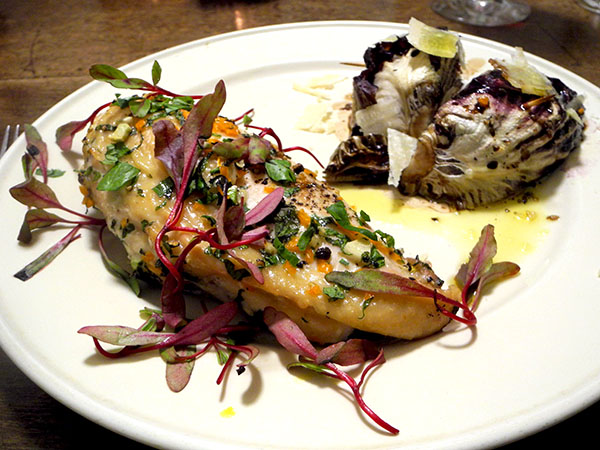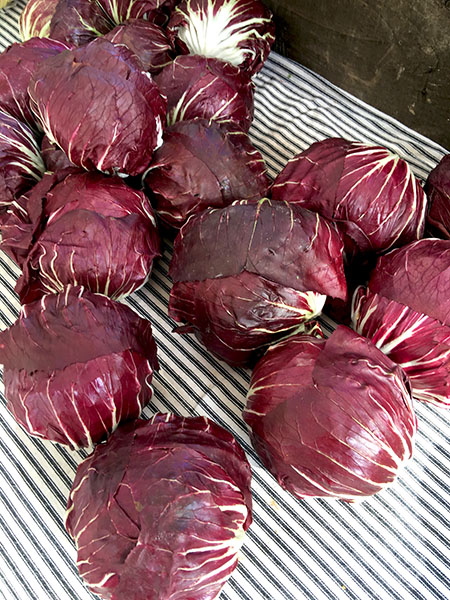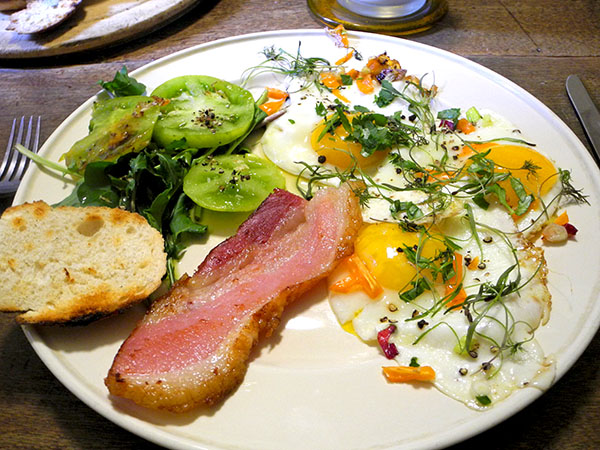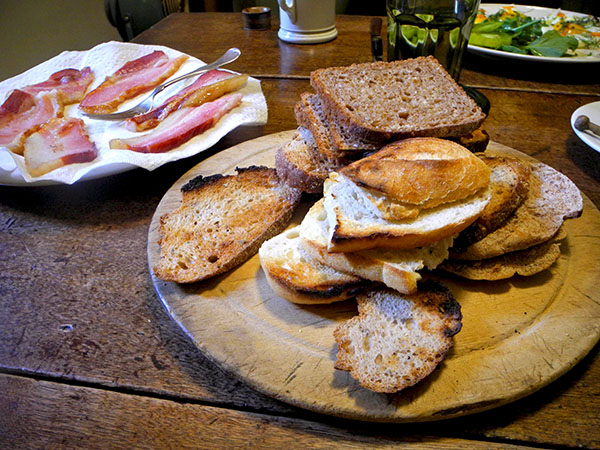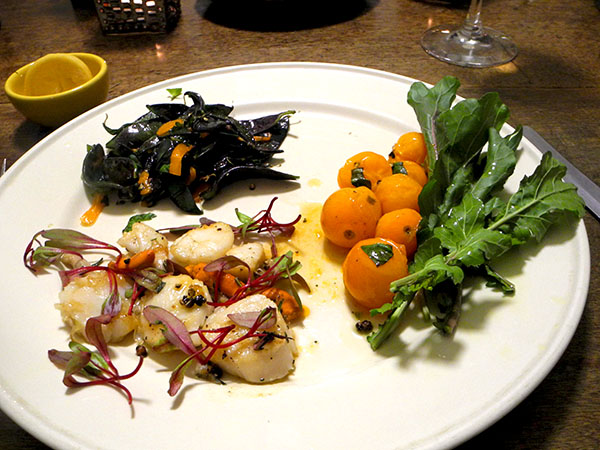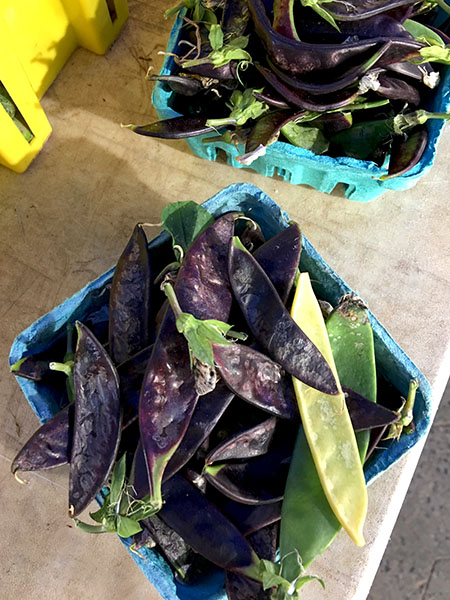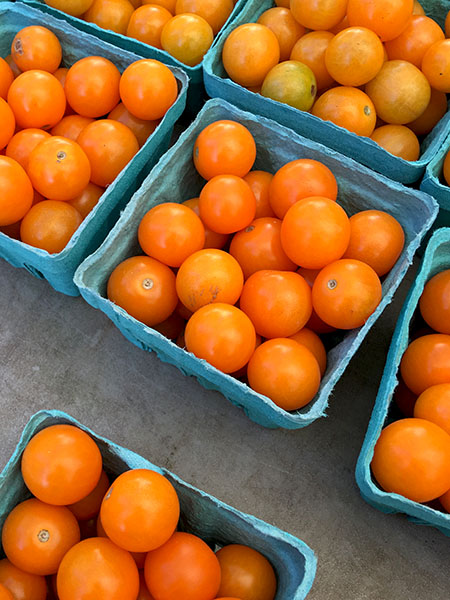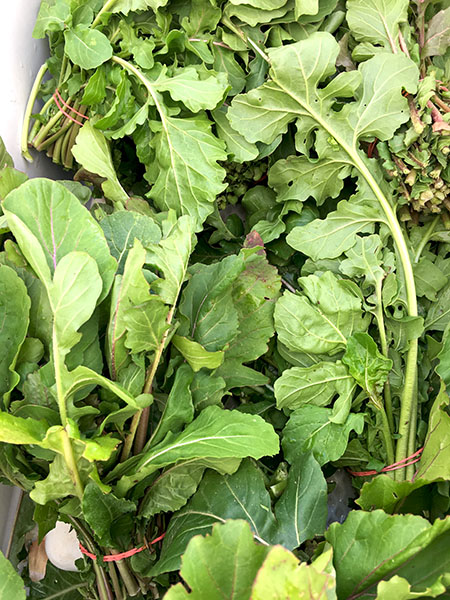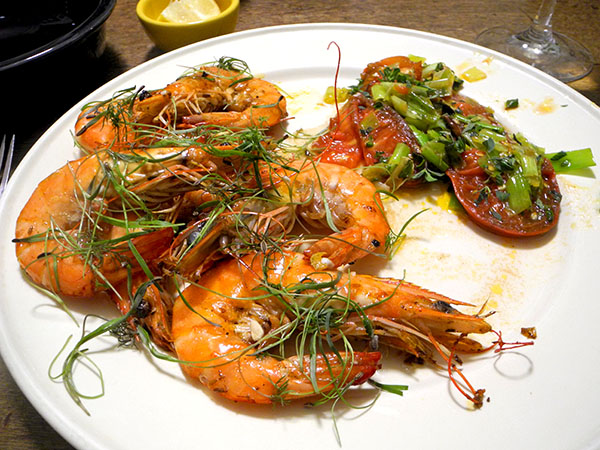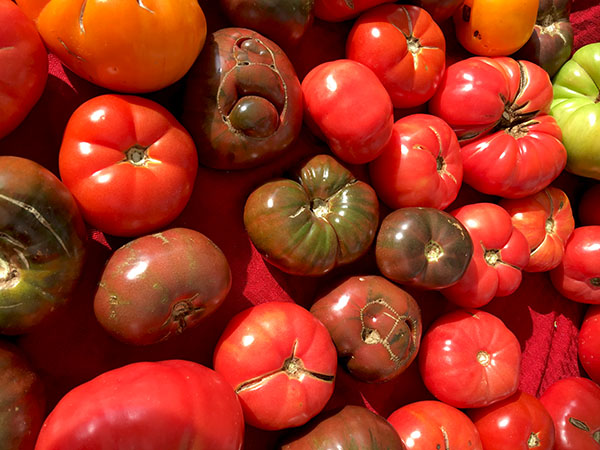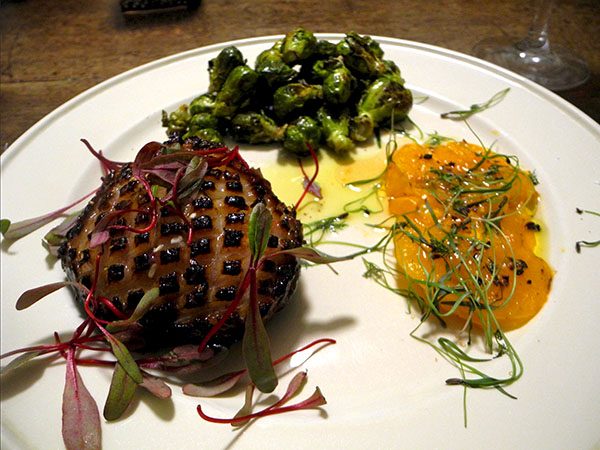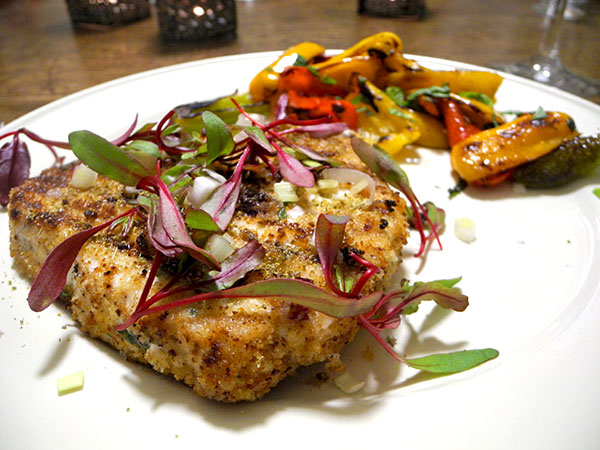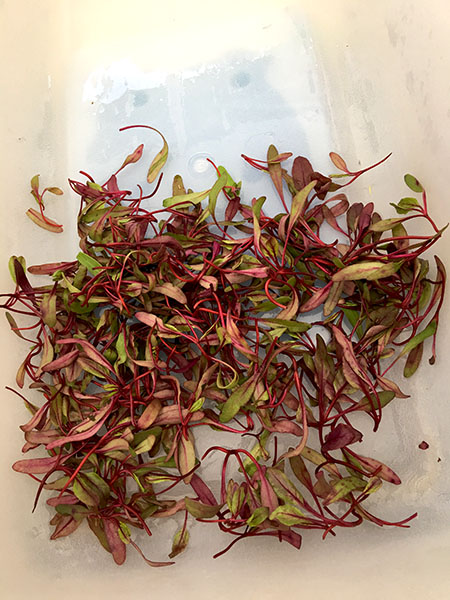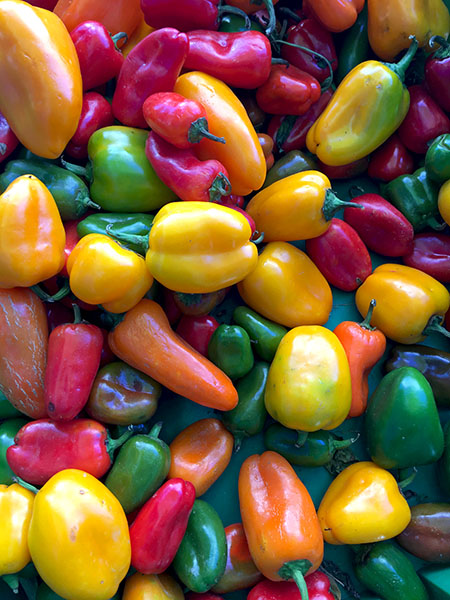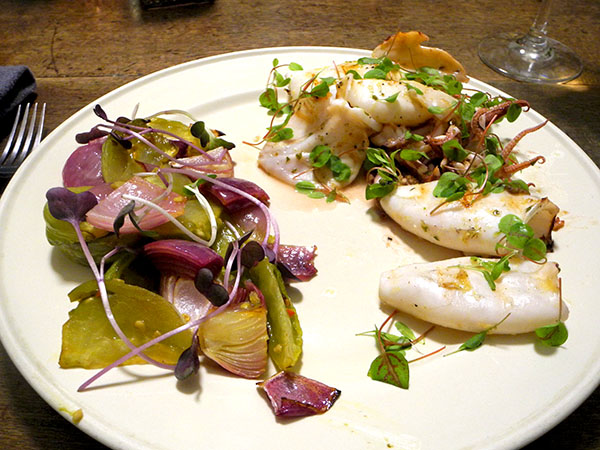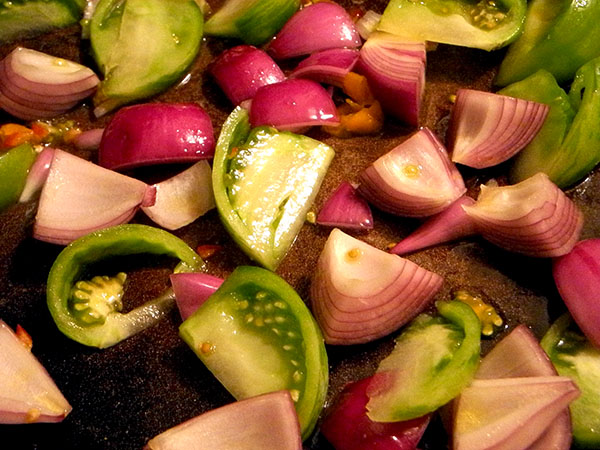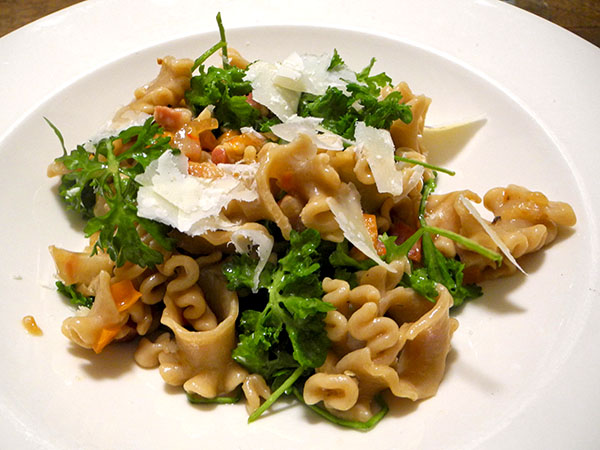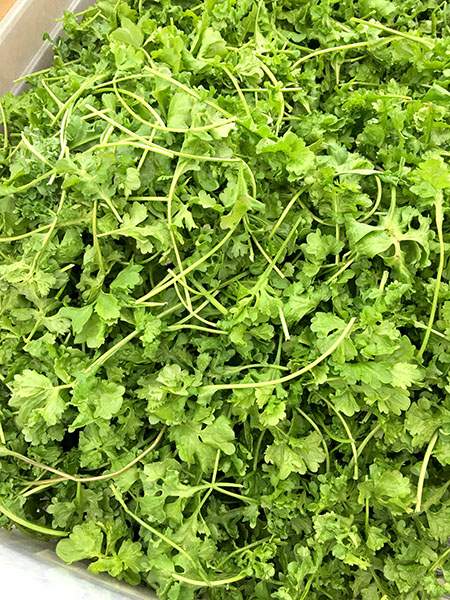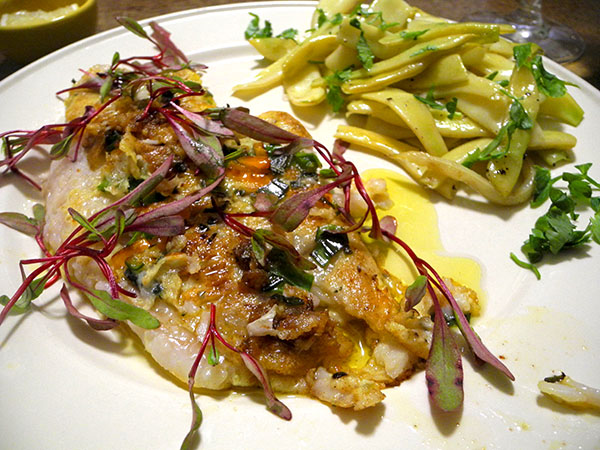
This flounder doesn’t look shy, but the colors of its coat betray only some of the complexity of the flavors it inherited from the garlic, herb and vegetables with which it shared a pan.
I no longer use a the original version of this recipe for the treatment of white fish, one in which I’ve incorporated hake, cod, several flatfish varieties, and possibly others in the past, but regardless of what I’ve done to alter it, there’s always magic.
The yellow Romano beans may be the last of the season for us, and it was a good sendoff: They had a great texture, and a surprising sweetness.

- two flounder fillets, 5 1/2 ounces each, from P.E. & D.D. Seafood, seasoned with salt and pepper on both sides, coated lightly with well-seasoned flour (I used North Country Farms Stone Ground Whole Wheat Flour), then submerged in a shallow bowl containing a mixture of one egg from Millport Dairy, a little whole milk, and a pinch of salt, allowed to stay submerged until the vegetable had been mostly prepared and the remaining ingredients for the fish set out, then removed from the bowl, placed in a heavy oval copper pan with 2 or 3 tablespoons of butter, several crushed dried sage leaves from Stokes Farm, one chopped Habanada pepper from Norwich Meadows Farm, and some chopped leek green leaves, fried over a brisk flame until golden, about two minutes for each side, sprinkled with lemon, transferred onto warm plates, some micro beets from Windfall Farms scattered over the top
- yellow Romano beans from Norwich Meadows Farm, briefly parboiled and dried inside the same warm pan, once drained, set aside, reheated while the fish was frying in a cast iron pan, seasoned, finished with chopped lovage from Two Guys from Woodbridge
- the wine was a California (Napa Valley) white, Matt Iaconis Chardonnay Napa Valley 2015, from Naked Wines
- the music was from the album of Per Nørgård’s work, ‘Libra. Rêves en pleine lumière. Kredsløb’, an extraordinarily impressive cycle of
